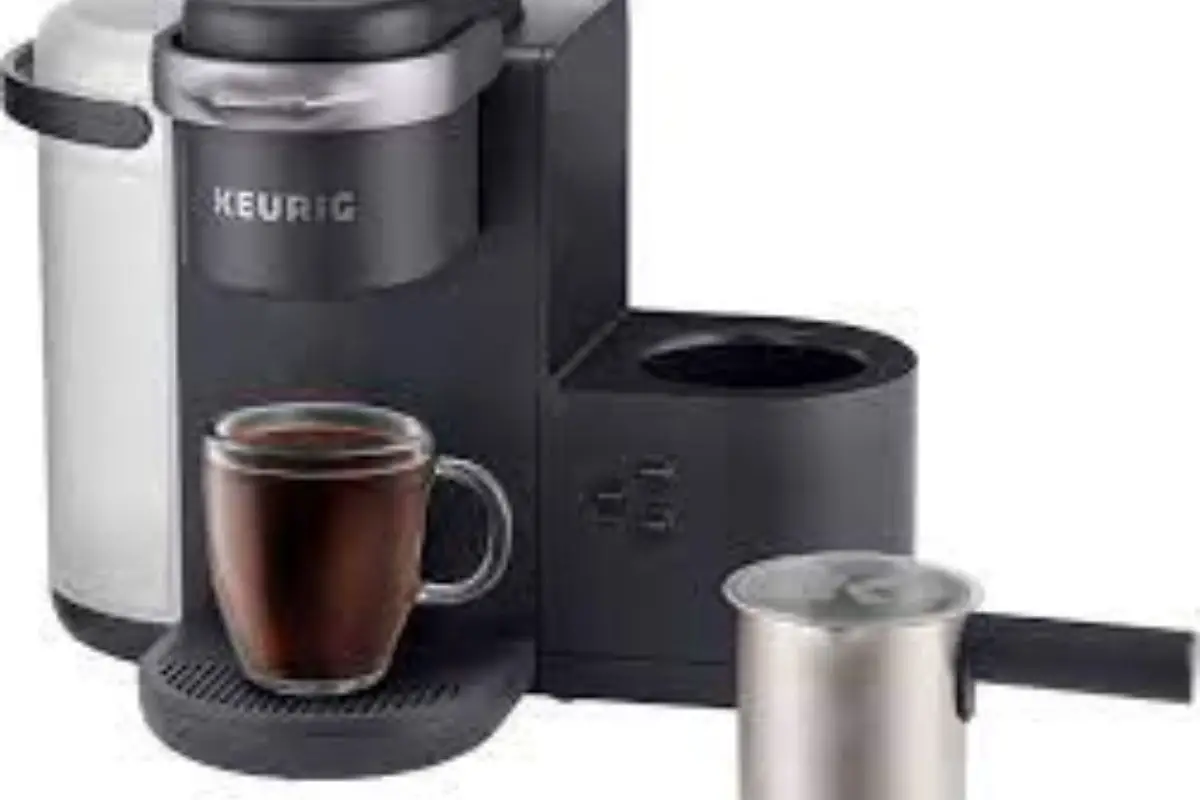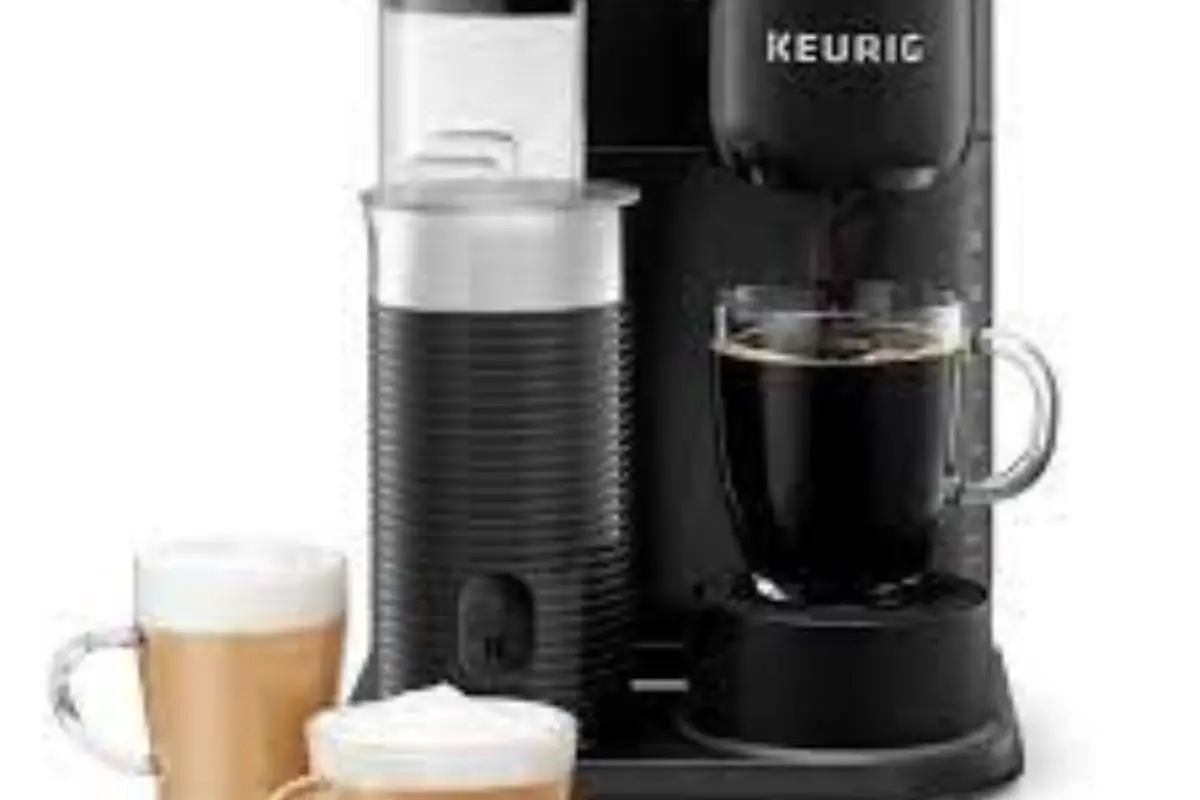In a world where convenience is king, the Keurig has become a staple in many households, providing a quick and easy way to enjoy a cup of coffee. However, amidst the hustle and bustle of our daily lives, we often overlook a crucial maintenance step for our beloved Keurig – draining. Yes, draining your Keurig may not be the most thrilling task, but it is one that should not be ignored.

Draining your Keurig is of utmost importance to ensure the longevity and optimal performance of your machine. By removing any residual water and debris, you can prevent clogs, mold growth, and potential damage to your Keurig. Moreover, regular draining helps to maintain the quality and taste of your coffee, providing you with a consistently delightful cup every time.
In this informative article, we will guide you through the necessary steps to effectively drain your Keurig. From gathering the required supplies to cleaning and reassembling the components, we will provide you with detailed instructions to ensure a safe and efficient process.
So, grab your safety goggles and let’s dive into the world of draining your Keurig.
Key Takeaways
- Regular draining of a Keurig is essential for maintenance and optimal performance.
- Draining helps prevent clogs, mold growth, and damage to the machine.
- Proper cleaning and rinsing of components, such as the water reservoir and drip tray, is necessary for optimal performance.
- Allowing all parts to air dry completely before reassembling is important to avoid damage or malfunctions.
Understand the Importance of Draining Your Keurig
The draining process of a Keurig machine is crucial in order to maintain its functionality and prevent any potential damage to its internal components. By draining the machine, you remove any remaining water or residue that may have accumulated over time.
This helps to prevent the growth of bacteria or mold, which can negatively impact the taste and quality of your coffee. Additionally, draining the Keurig allows you to clean and inspect the internal components, ensuring that they are in good working condition.
To successfully drain your Keurig, you will need to gather the necessary supplies. These include a large container to collect the water, a cleaning solution specifically designed for Keurig machines, and a clean cloth or sponge for wiping down the exterior. It is important to note that using the correct cleaning solution is essential, as using the wrong one may damage the machine or leave behind harmful residue.
Once you have gathered all the necessary supplies, you can proceed with the next steps of the draining process.
Gather the Necessary Supplies
To successfully prepare for the draining process, it is essential to gather all the required equipment and materials. This will ensure a smooth and safe procedure. Here are the necessary supplies you will need:
- A clean container: Find a suitable container to collect the water and cleaning solution that will be drained from the Keurig.
- Cleaning solution: Purchase a descaling solution specifically designed for Keurig machines. This solution will effectively remove mineral buildup and debris from the internal components.
- Water: You will need clean water to mix with the descaling solution.
- A funnel: A funnel will help you pour the cleaning solution and water into the Keurig reservoir without any spills or mess.
- A cloth or towel: Keep a cloth or towel nearby to wipe up any spills or drips during the draining process.
Gathering these supplies beforehand will ensure that you have everything you need to safely and effectively drain your Keurig machine. Once you have gathered all the necessary materials, you can proceed to the next step of preparing your Keurig for draining.
Prepare Your Keurig for Draining
In order to effectively prepare your Keurig machine for the draining process, it is important to carefully follow the necessary steps to ensure a successful outcome. By taking the time to properly prepare your machine, you can avoid any potential issues or mishaps during the draining process.
To begin, unplug your Keurig machine from the power source and make sure it is turned off. This ensures your safety and prevents any electrical accidents.
Next, remove the water reservoir from the machine. Empty any remaining water from the reservoir and thoroughly clean it using warm soapy water. Be sure to rinse it well to remove any soap residue.
After cleaning the water reservoir, inspect it for any signs of damage or wear. If you notice any cracks or leaks, it is important to replace the reservoir before continuing with the draining process.
Once the reservoir is clean and in good condition, reattach it to the machine. This will prepare your Keurig for the next step, which is draining the water reservoir.
By following these preliminary steps, you can ensure a safe and successful process for draining your Keurig machine.
Drain the Water Reservoir
One important step in the process of preparing a Keurig machine for maintenance is removing the water reservoir. The water reservoir is a key component of the Keurig machine, as it holds the water that is used to brew the coffee or other beverages.
To drain the water reservoir, follow these steps:
- Ensure that the Keurig machine is turned off and unplugged to avoid any potential electrical hazards.
- Lift the lid of the Keurig machine and locate the water reservoir at the back.
- Carefully remove the water reservoir by gripping the handle and pulling it straight up.
- Empty the water reservoir into a sink or other suitable container.
- Clean the water reservoir with warm, soapy water and rinse thoroughly before reattaching it to the Keurig machine.
It is important to drain the water reservoir before performing any maintenance on the Keurig machine to avoid any potential water damage or electrical issues. By removing the water reservoir, you can ensure that no water is left inside the machine during the maintenance process.
Once the water reservoir is drained, the next step is to clean and rinse the other components of the Keurig machine.
Clean and Rinse the Keurig Components

The cleanliness and proper maintenance of the various components of a Keurig machine are essential for ensuring the optimal performance and longevity of the appliance. After draining the water reservoir, the next step is to clean and rinse the Keurig components.
Start by removing the drip tray and detachable water reservoir. These parts can be washed with warm soapy water and a non-abrasive sponge or cloth. Pay close attention to any coffee residue or mineral deposits that may have accumulated. For hard-to-reach areas, such as the needle, use a small brush or toothbrush to gently scrub away any buildup.
Rinse all the components thoroughly with clean water to remove any soap residue.
It is important to note that the components, especially the needle, should be handled with care to avoid injury.
Once all the parts are clean and rinsed, allow them to air dry completely before reassembling the Keurig machine. This will help prevent any moisture from causing damage or mold growth.
After reassembling, it is recommended to test the Keurig machine by running a few cycles of plain water through it to ensure that it is functioning properly. This will also help flush out any remaining soap or debris.
Reassemble and Test Your Keurig
To ensure the proper functioning of your Keurig machine, it is important to meticulously reassemble the components, treating them like puzzle pieces that seamlessly fit together.
Start by placing the drip tray back into its designated slot, ensuring it is secure and level.
Next, attach the water reservoir firmly onto the machine, making sure it aligns properly with the designated slots.
Once the reservoir is in place, carefully reattach the brewer lid, ensuring it is securely closed to prevent any leakage during operation.
After reassembling the components, it is crucial to test your Keurig to confirm that it is working correctly.
Fill the water reservoir with fresh water, ensuring it is properly seated and not overfilled.
Place a cup on the drip tray and select a brew size to initiate the brewing process.
Monitor the machine closely during this test run to ensure there are no leaks or abnormalities.
If everything appears to be functioning as expected, congratulations! Your Keurig is now ready to use.
However, if any issues arise during the test, it is advised to consult the manufacturer’s instructions or seek professional assistance to address the problem and ensure your safety while using the machine.
Frequently Asked Questions
Can I use any type of liquid to drain my Keurig?
Different types of liquids should not be used to drain a Keurig. It is essential to follow the manufacturer’s instructions to ensure safety and proper functioning of the machine.
How often should I drain my Keurig?
Draining a Keurig should be done every 3-6 months to remove mineral deposits and ensure optimal performance. Regular maintenance helps prevent clogs and extends the lifespan of the machine, ensuring a safe and enjoyable brewing experience.
Can I skip the cleaning and rinsing steps after draining the Keurig?
The cleaning and rinsing steps after draining a Keurig are essential for maintaining hygiene and ensuring the safety of the machine. Skipping these steps can lead to the accumulation of bacteria and impurities, compromising the quality of the brewed beverages.
Can I drain my Keurig without removing the water reservoir?
Draining a Keurig without removing the water reservoir is not recommended as it may lead to incomplete drainage and potential mold or bacteria growth. It is important to follow the manufacturer’s instructions for proper cleaning and maintenance of the Keurig machine.
What should I do if my Keurig still doesn’t work properly after draining it?
If a Keurig still doesn’t work properly after draining it, one possible solution is to descale the machine. Descaling involves removing mineral deposits that can clog the system and affect performance. Follow the manufacturer’s instructions and use a descaling solution appropriate for your Keurig model.
Conclusion
Draining your Keurig is an important maintenance step to ensure the longevity and optimal performance of your machine. By removing any built-up mineral deposits or residue, you can prevent clogs and improve the taste of your coffee. To drain your Keurig, gather supplies such as a cleaning solution, water, and a container.
Prepare your Keurig by turning it off and unplugging it. Then, drain the water reservoir by removing and emptying it. Clean and rinse the various components before reassembling and testing your Keurig. By regularly draining your Keurig, you can ensure a better coffee experience.
One interesting statistic to note is that according to a study conducted by NSF International, 50% of household coffee makers contain yeast and mold. This highlights the importance of regular maintenance and cleaning to prevent the growth of harmful microorganisms. By draining your Keurig, you are taking a proactive step in keeping your machine clean and free from potentially harmful contaminants.
Also read:
